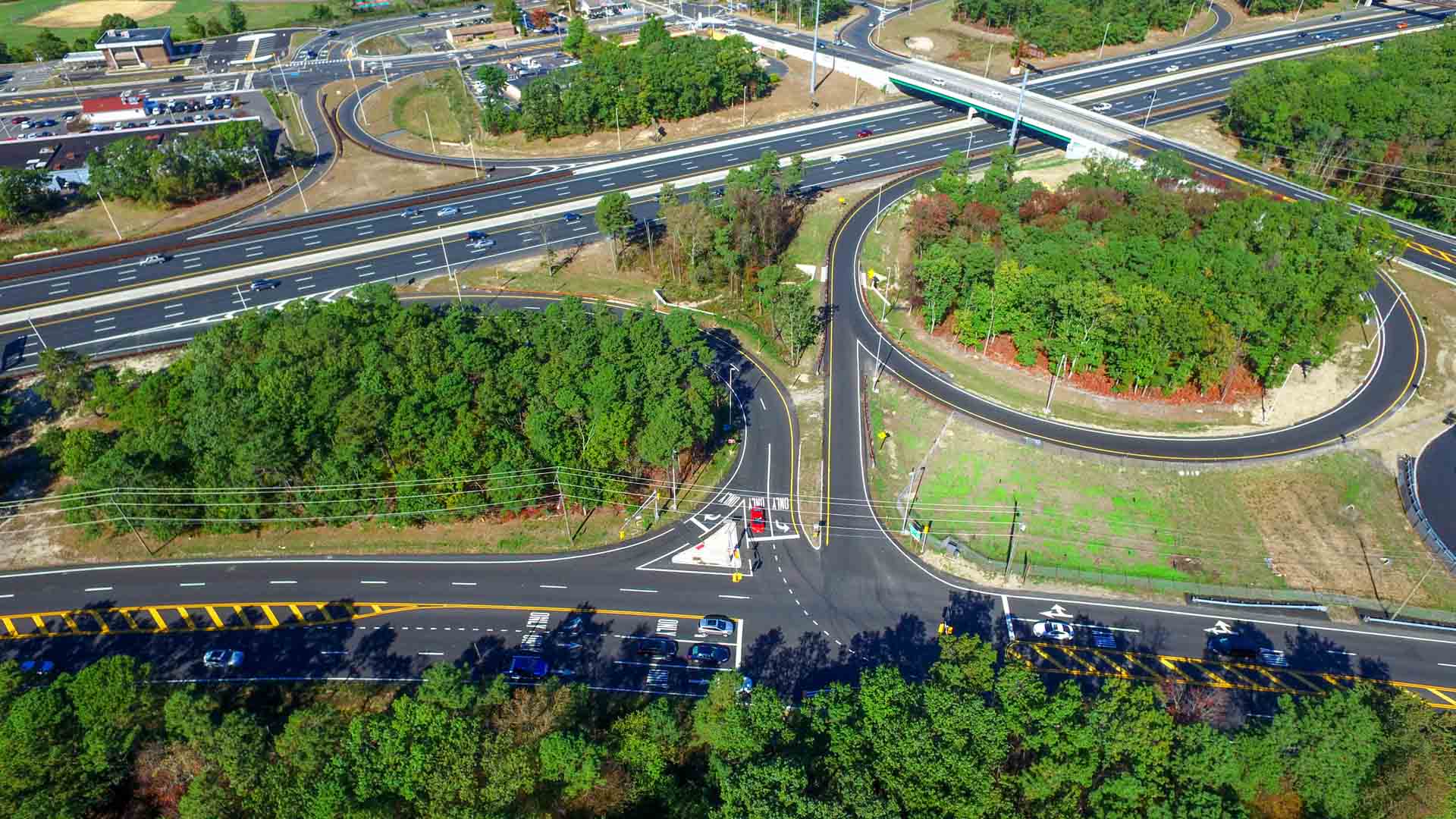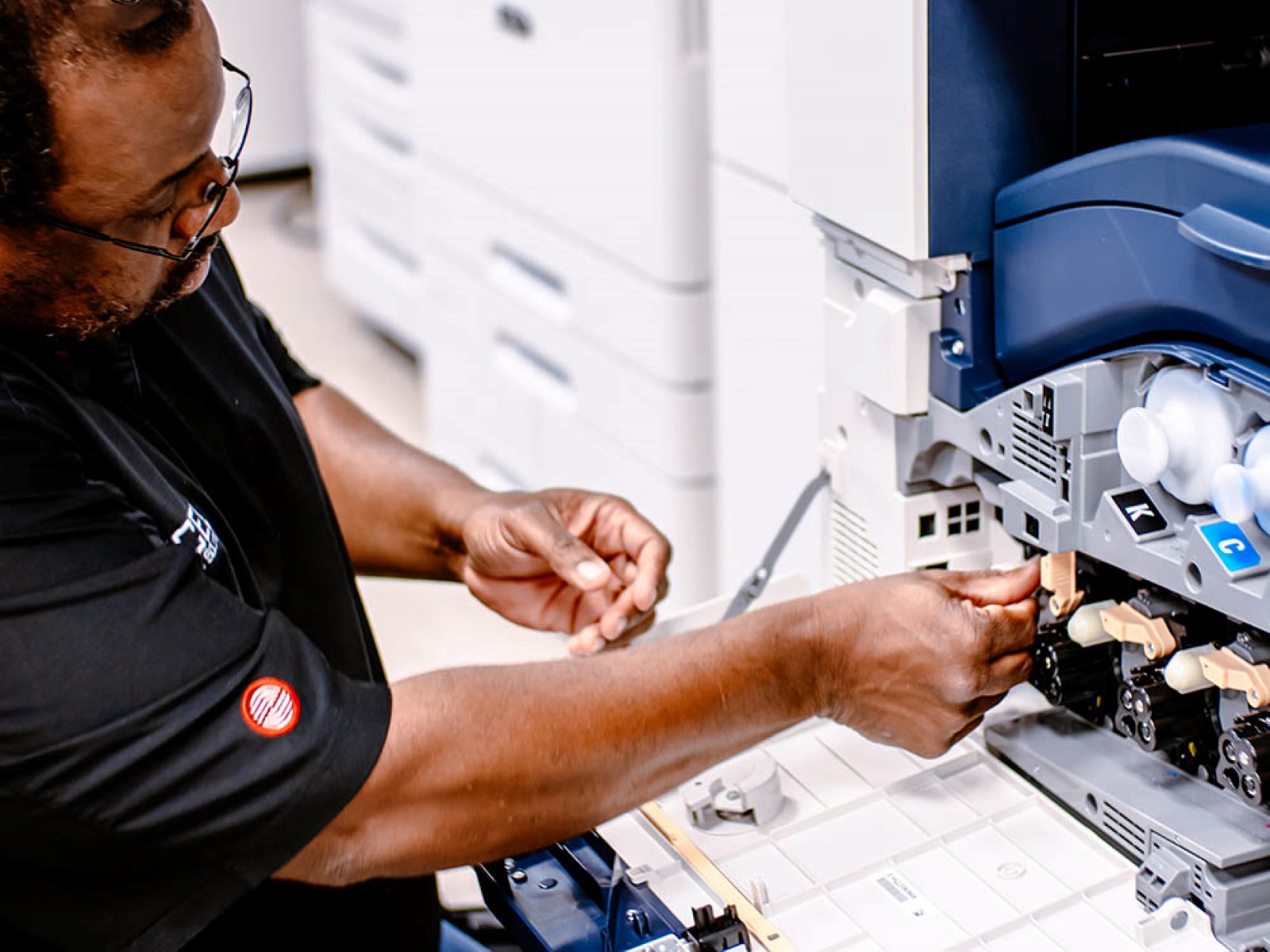Home>Articles>How Much Are Tolls On The Garden State Parkway


Articles
How Much Are Tolls On The Garden State Parkway
Modified: December 6, 2023
Find out the cost of tolls on the Garden State Parkway and plan your gardening budget accordingly.
(Many of the links in this article redirect to a specific reviewed product. Your purchase of these products through affiliate links helps to generate commission for Storables.com, at no extra cost. Learn more)
Introduction
The Garden State Parkway, often referred to as simply the Parkway, is a major highway in the state of New Jersey. Stretching 172.4 miles from the southernmost tip of the state in Cape May to the northernmost point in Montvale, the Parkway is a vital transportation artery for residents and visitors alike. As with many toll roads across the country, the Garden State Parkway requires drivers to pay tolls in order to access and utilize its services.
Since its inception in 1947, the Garden State Parkway has played a significant role in connecting communities, facilitating trade, and supporting economic development in New Jersey. The tolls collected on the Parkway have been instrumental in financing its construction, maintenance, and improvement projects over the years.
In this article, we will explore the history of the Garden State Parkway, dive into the purpose and importance of tolls, examine the different toll rates for passenger vehicles, discuss toll discounts and programs, explore toll collection methods, take a closer look at toll plazas and exit ramps, and examine the various payment options available to motorists. Furthermore, we will weigh the benefits and drawbacks of toll roads to provide a comprehensive perspective on the topic.
So, let’s fasten our seat belts and embark on a journey to discover everything you need to know about tolls on the Garden State Parkway!
Key Takeaways:
- The Garden State Parkway tolls serve as a crucial source of funding for infrastructure, traffic management, and economic growth, while offering motorists a range of payment options for a seamless travel experience.
- While toll roads like the Garden State Parkway provide essential funding for transportation, they also pose financial burdens and equity concerns for drivers, requiring careful management and consideration of alternative transportation options.
History of the Garden State Parkway
The Garden State Parkway has a rich history that dates back to the mid-20th century. The idea for a highway connecting the urban areas of New Jersey emerged in the 1930s as a response to growing traffic congestion and the need for improved transportation infrastructure. Construction of the Parkway began in the late 1940s under the supervision of the New Jersey Highway Authority.
The Garden State Parkway was officially opened to the public on July 14, 1954. Its original route spanned 169 miles, running from the New York-New Jersey state line at Montvale to the southern terminus in Cape May. Over the years, the Parkway underwent significant expansions and improvements to meet the demands of a growing population and increasing traffic volume.
Today, the Parkway consists of six lanes, with three lanes in each direction for most of its length. It encompasses toll plazas, rest areas, service areas, and numerous entrance and exit ramps that provide access to various towns, cities, and attractions throughout the state.
Throughout its existence, the Garden State Parkway has served as a vital transportation link, connecting major cities, suburban areas, and popular tourist destinations in New Jersey. It has played a crucial role in stimulating economic growth, supporting tourism, and improving transportation efficiency in the state.
Furthermore, the Parkway has continually undergone maintenance and improvement projects to ensure the safety and functionality of its infrastructure. These projects have included resurfacing, bridge rehabilitation, widening of lanes and ramps, and the installation of state-of-the-art toll collection systems.
As New Jersey’s primary north-south highway, the Garden State Parkway remains an essential part of the state’s transportation network, serving millions of motorists each year. Its history is a testament to the ongoing commitment to maintaining and enhancing the state’s infrastructure to meet the evolving needs of residents and visitors.
Purpose and Importance of Tolls
Tolls on the Garden State Parkway and other toll roads serve several important purposes. They play a crucial role in funding the construction, maintenance, and ongoing operations of highways, bridges, and other transportation infrastructure projects. Let’s explore the key reasons why tolls are necessary and the importance they hold.
Funding Highway Projects: One of the primary goals of toll collection is to generate revenue for financing major highway projects. The construction and maintenance of highways and bridges require substantial investment, and tolls provide a dedicated source of funding for these endeavors. The funds collected from tolls are reinvested back into the infrastructure, ensuring the continuous improvement and expansion of road networks.
Infrastructure Maintenance: Tolls play a vital role in ensuring the ongoing maintenance and repair of highways. Regular maintenance is essential to keep roads in a safe and functional condition. The revenue generated from tolls helps cover costs such as repaving, bridge repair, snow removal, lighting, signage, and other necessary upkeep activities. Without tolls, maintaining the infrastructure would become challenging, potentially leading to deteriorating road conditions and decreased safety.
Traffic Management: Tolls can help manage traffic congestion by serving as a means of deterrence during peak travel times. Higher toll rates during busy periods can encourage motorists to consider alternative routes or travel during off-peak times, resulting in more balanced traffic flow and reduced congestion. This can improve travel times and overall road efficiency for both commuters and commercial vehicles.
Sustainable Transportation Funding: Toll revenue provides a sustainable source of funding for transportation infrastructure. As the costs of construction and maintenance continue to rise, tolls help bridge the funding gap between gas taxes and the actual expenses of maintaining and expanding highway networks. This promotes the long-term sustainability of transportation systems and reduces reliance on government funding alone.
Economic Impact: Toll roads like the Garden State Parkway have a significant economic impact on the surrounding communities and the entire state. They help stimulate local economies by facilitating the movement of goods and services, attracting businesses, and supporting tourism. Well-maintained and efficient highways contribute to increased productivity, job creation, and overall economic growth.
Tolls on the Garden State Parkway, therefore, serve a vital purpose in ensuring the continued development and maintenance of New Jersey’s transportation infrastructure. They not only provide the necessary funding for highway projects, but they also contribute to traffic management, sustainability, and economic prosperity. Understanding the purpose and importance of tolls helps to appreciate their role in keeping our roads safe, well-maintained, and efficient.
Different Toll Rates for Passenger Vehicles
The Garden State Parkway implements a tiered toll rate system based on various factors, including the type of vehicle and the distance traveled. Let’s explore the different toll rates applicable to passenger vehicles on the Parkway.
Standard Passenger Vehicle Tolls: For most passenger vehicles, including cars, SUVs, and motorcycles, toll rates on the Garden State Parkway are determined based on the distance traveled. The toll amounts are divided into different zones, with each zone representing a specific segment of the highway. As motorists travel through each toll plaza, they are charged accordingly based on their entry and exit points. The exact toll rates for each zone can vary and are subject to periodic updates by the New Jersey Highway Authority.
E-ZPass Discounts: The Garden State Parkway offers discounts for motorists who use E-ZPass, an electronic toll collection system. E-ZPass users enjoy reduced toll rates compared to those paying in cash. The exact discount percentage may vary, but it provides an incentive for travelers to use electronic payment methods, which streamline the toll collection process and improve overall traffic flow.
Peak and Off-Peak Travel: In addition to standard toll rates, the Garden State Parkway may implement dynamic toll pricing based on peak and off-peak travel periods. During peak hours, such as weekday mornings and evenings when traffic is typically heavier, toll rates may be slightly higher to encourage motorists to consider alternative travel times. Conversely, off-peak travel during less busy periods may result in lower toll rates.
Toll Exemptions or Discounts: The Garden State Parkway provides certain exemptions or discounts for specific groups of drivers. For example, emergency vehicles, such as police cars and fire trucks, are generally exempt from tolls. Additionally, certain categories of drivers, such as low-income residents or those with disabilities, may be eligible for toll reduction or exemption programs. These programs aim to provide financial relief for individuals who may face financial hardship or have specific mobility needs.
It’s important to note that toll rates on the Garden State Parkway are subject to change, and it’s advisable to consult the official website or signage for the most up-to-date information on toll amounts and any applicable discounts or exemptions. By understanding the different toll rates for passenger vehicles, motorists can plan their trips accordingly and ensure they have the necessary funds or payment methods for a smooth journey on the Parkway.
Toll Discounts and Programs
The Garden State Parkway offers several toll discounts and programs that aim to provide cost-saving opportunities for motorists. These initiatives are designed to incentivize certain behaviors, improve traffic flow, and support specific groups of drivers. Let’s explore some of the toll discounts and programs available on the Parkway.
E-ZPass Discounts: E-ZPass, the electronic toll collection system used on the Garden State Parkway, offers significant discounts for motorists. E-ZPass users enjoy reduced toll rates compared to those paying in cash. The exact discount percentage may vary, but it typically ranges from 30% to 50%. By using E-ZPass, motorists not only save money on tolls but also benefit from faster and more efficient toll processing, reducing congestion at toll plazas.
Off-Peak Discounts: To encourage travel during less congested periods, the Garden State Parkway may offer off-peak discounts. These discounts are applicable to drivers who travel during non-peak hours, typically outside of the morning and evening rush periods. Off-peak discounts provide a financial incentive for motorists to adjust their travel times, leading to a smoother traffic flow and reduced congestion during peak hours.
Senior Citizen Discount: The Garden State Parkway offers a senior citizen discount program for individuals aged 65 and older. Eligible seniors can receive a discount on toll rates by signing up for the Senior Citizen Discount Program and obtaining a special E-ZPass transponder. This initiative aims to assist seniors in managing their transportation costs while maintaining their mobility and independence.
Green Pass: The Green Pass program is designed to encourage environmentally friendly transportation choices. Motorists who drive qualifying low-emission vehicles, such as electric or hybrid cars, can apply for a Green Pass to receive discounts on Garden State Parkway tolls. By promoting the use of environmentally friendly vehicles, the Green Pass program contributes to reducing pollution and supporting sustainable transportation practices.
Commercial Discounts: The Garden State Parkway offers commercial discounts for certain categories of vehicles, such as trucks and buses. Businesses or individuals operating eligible commercial vehicles can apply for commercial accounts, which provide discounts on toll rates. These discounts help support commercial activity, facilitate the movement of goods and services, and contribute to economic growth in the region.
It’s important for motorists to research and understand the specific requirements and eligibility criteria for each toll discount or program. Information regarding how to apply and the necessary documentation is typically available on the official Garden State Parkway website or through the New Jersey Highway Authority. By taking advantage of toll discounts and programs, drivers can save money, contribute to traffic management efforts, and support initiatives that align with their specific needs or environmental values.
Toll Collection Methods
The toll collection methods utilized on the Garden State Parkway have evolved over the years to improve efficiency, reduce congestion, and simplify the payment process for motorists. Let’s explore the two primary toll collection methods implemented on the Parkway: electronic toll collection and cash toll collection.
Electronic Toll Collection: Electronic toll collection systems, such as E-ZPass, offer a convenient and efficient way for motorists to pay tolls on the Garden State Parkway. With electronic toll collection, drivers mount a small transponder on their vehicle’s windshield. As they pass through a toll plaza, antennas detect the transponder, and tolls are automatically deducted from a pre-funded E-ZPass account. This method eliminates the need for cash transactions and significantly reduces the time spent at toll plazas, improving traffic flow and reducing congestion. Electronic toll collection is the preferred method on the Garden State Parkway, and E-ZPass users often benefit from discounted toll rates.
Cash Toll Collection: While electronic toll collection is the primary method on the Garden State Parkway, cash toll collection is still available for motorists who prefer or require this payment option. Cash lanes at toll plazas are equipped with toll booths staffed by toll collectors. Drivers stop at these booths and pay their tolls in cash, receiving change if necessary. Cash toll collection is generally slower than electronic toll collection, as it requires manual transactions and can lead to longer queues during peak travel periods. However, it provides a convenient method for drivers who do not have E-ZPass accounts or prefer to pay with cash.
It’s important to note that the Garden State Parkway encourages the use of electronic toll collection to expedite the toll payment process and improve traffic flow. Both visitors and residents are encouraged to sign up for E-ZPass to enjoy the benefits of reduced toll rates and faster travel times on the Parkway.
In recent years, toll plazas on the Garden State Parkway have undergone modernization efforts to further streamline the toll collection process. These updates include the installation of high-speed E-ZPass lanes, automatic license plate recognition systems for cashless tolling, and the elimination of manual toll booths. These advancements contribute to greater efficiency and convenience for motorists, ensuring a smoother travel experience.
Whether utilizing electronic toll collection or paying with cash, motorists can rest assured that the Garden State Parkway offers multiple payment options to accommodate their individual preferences. By choosing the appropriate toll collection method, drivers can navigate the Parkway seamlessly and enjoy a hassle-free journey.
You can use the official Garden State Parkway website or a toll calculator to find out the current toll rates for your specific route. Keep in mind that tolls can vary based on your vehicle type and the distance traveled.
Electronic Toll Collection
Electronic Toll Collection (ETC) is a modern and efficient method of collecting tolls on highways, including the Garden State Parkway. ETC utilizes electronic transponders and advanced technology to automatically deduct tolls from a pre-funded account as vehicles pass through designated tolling points. Let’s explore the benefits and workings of electronic toll collection on the Garden State Parkway.
How ETC Works: To use ETC on the Garden State Parkway, drivers must first obtain an E-ZPass transponder. This small device, typically mounted on the windshield, contains a unique identifier linked to the driver’s E-ZPass account. As the vehicle passes through a toll plaza equipped with ETC infrastructure, antennas detect the transponder, and the toll amount is automatically deducted from the driver’s account. Prompt and accurate payment ensures a seamless travel experience without the need to stop or interact with toll collectors.
Benefits of ETC: Electronic toll collection offers numerous advantages for motorists, including:
- Convenience: ETC eliminates the need for cash transactions or manual toll payments, allowing drivers to travel with ease and avoid the hassle of fumbling for change or waiting in lines at toll plazas.
- Time and Fuel Savings: With ETC, vehicles can travel through toll plazas at highway speeds, which reduces congestion and saves time for drivers. Additionally, the free-flow movement helps conserve fuel by avoiding unnecessary stops and starts.
- Discounted Tolls: E-ZPass users often benefit from discounted toll rates compared to drivers who pay in cash. These discounts provide cost savings for frequent travelers on the Garden State Parkway.
- Compatibility and Interoperability: E-ZPass is an interoperable system, meaning it can be used on various toll roads and bridges throughout the region. This compatibility makes it convenient for drivers who frequently travel across different states or use multiple toll facilities.
- Account Management: ETC systems, like E-ZPass, provide online account management tools that enable drivers to monitor their toll activity, replenish their account balances, and update their personal information easily.
Signing Up for E-ZPass: Joining the E-ZPass program is straightforward. Interested motorists can visit the official E-ZPass website or contact their local E-ZPass Customer Service Center to obtain an application. The application process typically requires providing vehicle information and selecting a preferred funding method for the E-ZPass account. Once approved, drivers receive their E-ZPass transponder, and the account can be easily managed online or through customer service centers.
It’s important to note that E-ZPass is not only limited to passenger vehicles but is also available for commercial vehicles, carpoolers, and motorcycles. Each category may have specific guidelines and requirements for using E-ZPass, and it’s best to consult the official E-ZPass website or customer service for detailed information.
For motorists using the Garden State Parkway, electronic toll collection via E-ZPass is a convenient and efficient option. By utilizing ETC, drivers can experience a smoother journey, save time and money, and contribute to the overall flow of traffic on the Parkway.
Cash Toll Collection
Cash toll collection is one of the payment methods available on the Garden State Parkway for motorists who prefer or need to pay with cash. While electronic toll collection, such as E-ZPass, is the primary method on the Parkway, cash toll collection offers a convenient option for drivers who do not have an E-ZPass account or prefer to pay their tolls in cash.
How Cash Toll Collection Works:
When approaching a toll plaza on the Garden State Parkway, drivers can identify the cash lanes designated by signs or markings. These lanes are typically staffed by toll collectors who handle the cash transactions. As motorists reach the toll booth, they stop to pay their toll using cash. Toll collectors accept various denominations of currency and provide change if necessary. Once the toll is paid, drivers continue their journey.
Benefits of Cash Toll Collection:
- Accessibility: Cash toll collection ensures that all drivers, regardless of whether they have E-ZPass or not, can access and utilize the Garden State Parkway.
- Flexibility: Cash toll collection allows motorists to pay their tolls using cash, providing a familiar and convenient method of payment.
- No Account or Transponder: Unlike electronic toll collection systems, cash tolls do not require drivers to have an E-ZPass account or mount a transponder on their vehicle.
- No Pre-Funded Account: With cash toll collection, there is no need to pre-fund an account or monitor balances. Drivers simply pay the toll amount at the time of passing through the toll plaza.
Considerations for Cash Toll Collection:
It’s important to note that cash toll collection may have some drawbacks and considerations to keep in mind:
- Potential Delays: Cash toll collection lanes can sometimes experience longer wait times compared to electronic toll collection lanes. During peak travel periods, higher traffic volumes can lead to queues at toll plazas.
- Exact Change or Toll Booth Assistance: Drivers should be prepared with the exact change or know that toll collectors can provide change. If assistance is needed, drivers can ask toll collectors for guidance on the toll amount and payment process.
- No Discounts: Unlike E-ZPass users who often benefit from discounted toll rates, cash-paying motorists do not receive these discounts.
- Efficiency and Modernization Efforts: The Garden State Parkway has been investing in modernizing toll plazas and infrastructure, often moving towards electronic toll collection to improve efficiency and traffic flow.
It’s worth noting that the Garden State Parkway strongly encourages the use of E-ZPass as the preferred method for toll payment due to its efficiency and benefits for both drivers and the overall traffic flow. However, cash toll collection remains available to accommodate the needs of motorists who prefer or require this payment option.
Whether paying with cash or utilizing electronic toll collection, the Garden State Parkway provides a range of options for drivers to ensure a convenient and smooth journey on this vital transportation artery.
Toll Plazas and Exit Ramps
Toll plazas and exit ramps are integral components of the Garden State Parkway, playing a crucial role in the collection of tolls and facilitating the movement of traffic. Let’s explore the function and features of toll plazas and exit ramps on the Garden State Parkway.
Toll Plazas:
Toll plazas are strategically located points along the Garden State Parkway where tolls are collected from motorists. These plazas consist of multiple lanes designated for electronic toll collection (ETC), cash payments, and specific access types such as E-ZPass Only or Exact Change lanes. The number of lanes and layout may vary depending on the toll plaza’s location and traffic demands.
When approaching a toll plaza, it’s important to follow the signage that directs drivers to the appropriate lanes based on their preferred payment method. E-ZPass users should look for dedicated E-ZPass lanes, marked with the E-ZPass logo or signage. Cash-paying motorists should identify the lanes designated for cash toll collection. Taking note of these indications and selecting the correct lane helps ensure a smooth and efficient passage through the toll plaza.
At toll plazas, drivers encounter toll booths or electronic gantries that house the necessary equipment for toll collection. Toll collectors staff the booths designated for cash payments, while electronic gantries house the equipment for scanning and reading the E-ZPass transponders used in electronic toll collection. These toll collection points are manned by trained personnel who assist drivers with transactions, provide change when needed, and answer any toll-related questions.
Exit Ramps:
Exit ramps on the Garden State Parkway provide motorists with access to specific locations, towns, cities, or points of interest along the highway. Motorists use exit ramps to exit the Parkway, reach nearby neighborhoods, or access various facilities such as gas stations, restaurants, and rest areas.
The exit ramps on the Garden State Parkway are typically well-marked with signage indicating the upcoming exit number, the destination, and sometimes additional information such as distance or service area availability. It’s essential for drivers to be attentive to these signs to ensure they exit at the desired location safely and efficiently.
Exit ramps are designed to accommodate smooth traffic flow as vehicles leave the Garden State Parkway. Proper signaling, adhering to speed limits, and merging responsibly onto local roads are important practices to ensure a seamless transition. Additionally, drivers should be cautious and yield to pedestrians or other vehicles when necessary.
It’s worth noting that some exit ramps on the Garden State Parkway may have toll booths located on the ramp itself. This allows drivers to pay the appropriate toll without the need to re-enter the Parkway. These toll collection points are clearly marked, and it’s essential to be prepared for the toll payment while navigating the exit ramp.
Understanding the layout and functionality of toll plazas and exit ramps on the Garden State Parkway is crucial for a smooth and efficient travel experience. By following signage, selecting the appropriate payment lanes, and safely navigating the exit ramps, motorists can enjoy a seamless journey on the Garden State Parkway while experiencing minimal disruption and delays.
Toll Payment Options
When traveling on the Garden State Parkway, there are multiple payment options available to motorists to pay their tolls conveniently. These options cater to different preferences and ensure a smooth and efficient toll payment process. Let’s explore the various toll payment options on the Garden State Parkway.
Electronic Toll Collection (ETC) – E-ZPass:
E-ZPass is an electronic toll collection system widely accepted on toll roads, bridges, and tunnels across the United States, including the Garden State Parkway. With E-ZPass, motorists can conveniently pay tolls without the need for cash transactions. E-ZPass users mount a small transponder on their vehicles’ windshields, which communicates with the toll plaza infrastructure as they pass through designated E-ZPass lanes. The toll amount is then automatically deducted from the driver’s pre-funded E-ZPass account. E-ZPass offers discounted toll rates and faster processing times, promoting a smoother travel experience on the Parkway.
Cash Payment:
For drivers who prefer to pay their tolls in cash, the Garden State Parkway provides cash toll collection lanes. Motorists can approach the designated cash lanes at toll plazas and pay the exact toll amount using U.S. currency. Toll collectors staff these cash lanes and provide change if necessary. It’s important to note that paying with cash may involve longer wait times at toll plazas, especially during peak travel periods, due to the manual transaction process.
Toll-by-Plate (TBP):
Toll-by-Plate (TBP) is a payment method designed for motorists who do not have an E-ZPass transponder or who do not pay cash at toll plazas. With TBP, cameras located at the toll plazas capture images of the vehicle’s license plate as it passes through. The toll authority then uses the license plate information to generate a bill for the toll amount owed. This bill is mailed to the registered owner of the vehicle, who can submit payment online, by phone, or through other specified methods.
Mobile Payment Apps:
Some toll authorities, including the Garden State Parkway, offer mobile payment apps that allow drivers to pay tolls conveniently using their smartphones. These apps typically link to the driver’s preferred payment method, such as a credit card or bank account, and provide a simple and secure way to pay tolls without the need for cash or an E-ZPass transponder. Mobile payment apps may offer additional features such as trip history, toll rate calculators, and account management capabilities.
When using any of the toll payment options on the Garden State Parkway, it’s important to adhere to the specific instructions and guidance provided at toll plazas. Following signage, selecting the appropriate lanes, and being prepared with the necessary payment method ensures a seamless toll payment process and contributes to the smooth flow of traffic on the Parkway.
With a range of payment options available, the Garden State Parkway aims to provide convenience and flexibility for all motorists, allowing them to choose the method that best suits their needs and preferences. Whether it’s E-ZPass, cash payment, toll-by-plate, or mobile payment apps, drivers can navigate the Parkway efficiently while ensuring their tolls are paid accurately and promptly.
Benefits and Drawbacks of Toll Roads
Toll roads, such as the Garden State Parkway, have both benefits and drawbacks that should be considered when evaluating their impact on transportation and motorists. Let’s explore the advantages and disadvantages of toll roads.
Benefits of Toll Roads:
- Funding for Infrastructure: One of the significant benefits of toll roads is that they provide a dedicated source of revenue for the construction, maintenance, and improvement of highways and bridges. Toll revenues contribute to the development of transportation infrastructure, ensuring safe and efficient road networks for motorists.
- Reduced Congestion: Toll roads often feature dedicated lanes for electronic toll collection, such as E-ZPass, which streamlines the payment process and reduces congestion at toll plazas. By implementing efficient toll collection systems, toll roads can improve traffic flow, reduce delays, and enhance overall road efficiency.
- Improved Maintenance: Toll revenues play a crucial role in maintaining and repairing highways. With a dedicated funding source, toll road operators can allocate resources for regular maintenance activities, ensuring that roads remain in good condition and minimizing the risk of accidents due to neglected infrastructure.
- Quality Services and Amenities: Toll roads often offer a range of amenities for motorists’ comfort and convenience. These may include well-maintained rest areas, service plazas, and roadside assistance programs. Such services can enhance the travel experience and ensure the safety and well-being of drivers and their vehicles.
- Financial Sustainability: Toll roads provide a means for generating revenue independent of government funding. This financial sustainability allows for ongoing maintenance and improvements without solely relying on taxpayer dollars. By diversifying funding sources, toll roads help alleviate the burden on public budgets.
Drawbacks of Toll Roads:
- Financial Burden on Drivers: Toll roads impose an additional cost on motorists, which can be a burden for individuals who frequently travel or commute through toll areas. The cumulative toll expenses may impact household budgets, particularly for those on lower incomes or those who have to frequently travel long distances.
- Potential for Traffic Diversion: In some cases, drivers may choose to avoid toll roads, opting for alternative routes to save money. This can lead to increased traffic congestion on non-toll routes, putting additional strain on those roads and potentially negating the intended benefits of toll roads.
- Equity and Access Concerns: Toll roads can raise concerns about equity, as individuals who cannot afford to pay tolls or do not have access to an electronic toll collection system may face limited transportation options. Toll exemptions, discounts, or other programs may help mitigate these concerns, but they may not entirely eliminate them.
- Operational Costs and Administration: Maintaining toll collection systems, staffing toll plazas, and administering toll road operations incurs costs for toll road operators. These costs need to be balanced against the revenue generated, and efficient management practices are required to ensure a sustainable tolling system.
It’s important to consider these benefits and drawbacks when evaluating the role and impact of toll roads like the Garden State Parkway. While toll roads provide essential funding for infrastructure development and maintenance, they also impose financial burdens on drivers and require careful management to address equity concerns and ensure a positive travel experience for all motorists.
By understanding these pros and cons, policymakers and transportation authorities can make informed decisions regarding toll road implementation, toll rates, and the development of alternative transportation options to provide a balanced and efficient transportation network for the benefit of all road users.
Conclusion
The Garden State Parkway, with its rich history and vital role in New Jersey’s transportation network, is a key route connecting communities, businesses, and attractions throughout the state. Toll collection on the Parkway has been essential in both financing the construction and maintenance of this critical infrastructure.
Throughout this article, we have explored various aspects of tolls on the Garden State Parkway, including its history, purpose, toll rates, discounts, toll collection methods, and payment options. Understanding these facets allows motorists to navigate the Parkway efficiently and make informed decisions regarding toll payment.
Tolls on the Garden State Parkway serve several important purposes, including funding highway projects, supporting infrastructure maintenance, managing traffic congestion, and ensuring sustainable transportation funding. Furthermore, they have a positive economic impact, promoting economic growth, creating jobs, and facilitating the movement of goods and services.
Motorists traveling on the Garden State Parkway have the option to pay tolls through electronic toll collection (E-ZPass), cash payment, toll-by-plate, or mobile payment apps. Each of these payment methods offers its own advantages, providing flexibility and convenience for drivers to choose the option that suits their preferences and needs.
It’s important to note that toll roads, including the Garden State Parkway, have both benefits and drawbacks. While tolls provide a dedicated funding source for infrastructure development and maintenance, they can impose a financial burden on motorists. Concerns about equity and access must also be addressed to ensure that toll roads remain fair and accessible to all drivers.
In conclusion, tolls on the Garden State Parkway play a vital role in maintaining and improving New Jersey’s transportation infrastructure. They provide a means of funding essential projects while managing traffic flow and supporting economic growth. By understanding the various aspects of tolls on the Parkway, motorists can navigate the road confidently and contribute to the continued success and sustainability of this essential transportation artery.
Frequently Asked Questions about How Much Are Tolls On The Garden State Parkway
Was this page helpful?
At Storables.com, we guarantee accurate and reliable information. Our content, validated by Expert Board Contributors, is crafted following stringent Editorial Policies. We're committed to providing you with well-researched, expert-backed insights for all your informational needs.














0 thoughts on “How Much Are Tolls On The Garden State Parkway”